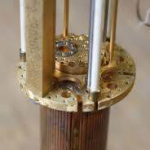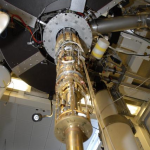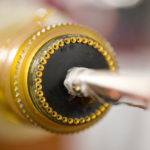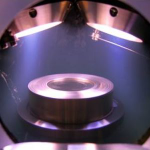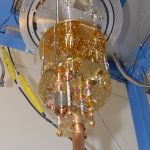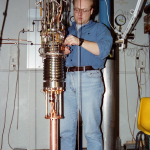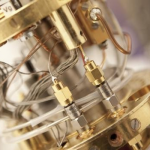

- Photon Transport in a Bose-Hubbard Chain of Superconducting Artificial Atoms
G. P. Fedorov et al., Phys. Rev. Lett. 126, 180503 (2021) - Path-Dependent Supercooling of the
He3 Superfluid A-B Transition
Dmytro Lotnyk et al., Phys. Rev. Lett. 126, 215301 (2021) - Superconductivity in an extreme strange metal
D. H. Nguyen et al., Nat Commun 12, 4341 (2021) - High-Q Silicon Nitride Drum Resonators Strongly Coupled to Gates
Xin Zhou et al., Nano Lett. 21, 5738-5744 (2021) - Measurement of the 229Th isomer energy with a magnetic micro-calorimeter
T. Sikorsky et al., Phys. Rev. Lett. 125 (2020) 142503
Progress in Cooling Nanoelectronic Devices to Ultra-Low Temperatures
A. T. Jones, C. P. Scheller, J. R. Prance, Y. B. Kalyoncu, D. M. Zumbühl, R. P. HaleyHere we review recent progress in cooling micro/nanoelectronic devices significantly below 10 mK. A number of groups worldwide are working to produce sub-millikelvin on-chip electron temperatures, motivated by the possibility of observing new physical effects and improving the performance of quantum technologies, sensors and metrological standards. The challenge is a longstanding one, with the lowest reported on-chip electron temperature having remained around 4 mK for more than 15 years. This is despite the fact that microkelvin temperatures have been accessible in bulk materials since the mid 20th century. In this review we describe progress made in the last five years using new cooling techniques. Developments have been driven by improvements in the understanding of nanoscale physics, material properties and heat flow in electronic devices at ultralow temperatures, and have involved collaboration between universities and institutes, physicists and engineers. We hope that this review will serve as a summary of the current state-of-the-art, and provide a roadmap for future developments. We focus on techniques that have shown, in experiment, the potential to reach sub-millikelvin electron temperatures. In particular, we focus on on-chip demagnetisation refrigeration. Multiple groups have used this technique to reach temperatures around 1 mK, with a current lowest temperature below 0.5 mK.
J Low Temp Phys 201, 772–802 (2020)
doi: 10.1007/s10909-020-02472-9
arxiv: https://arxiv.org/abs/2001.07419
supplemental material: https://zenodo.org/record/3759633#.Xz-VkTUo9aQ

